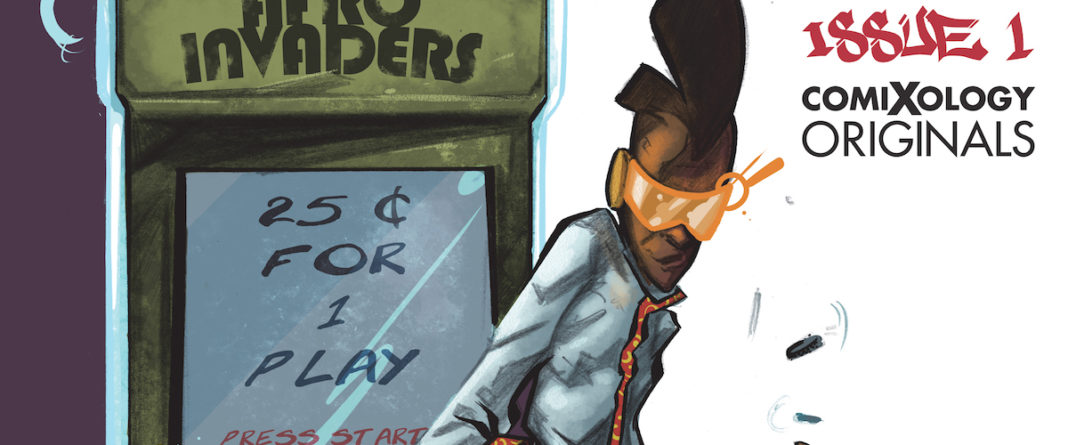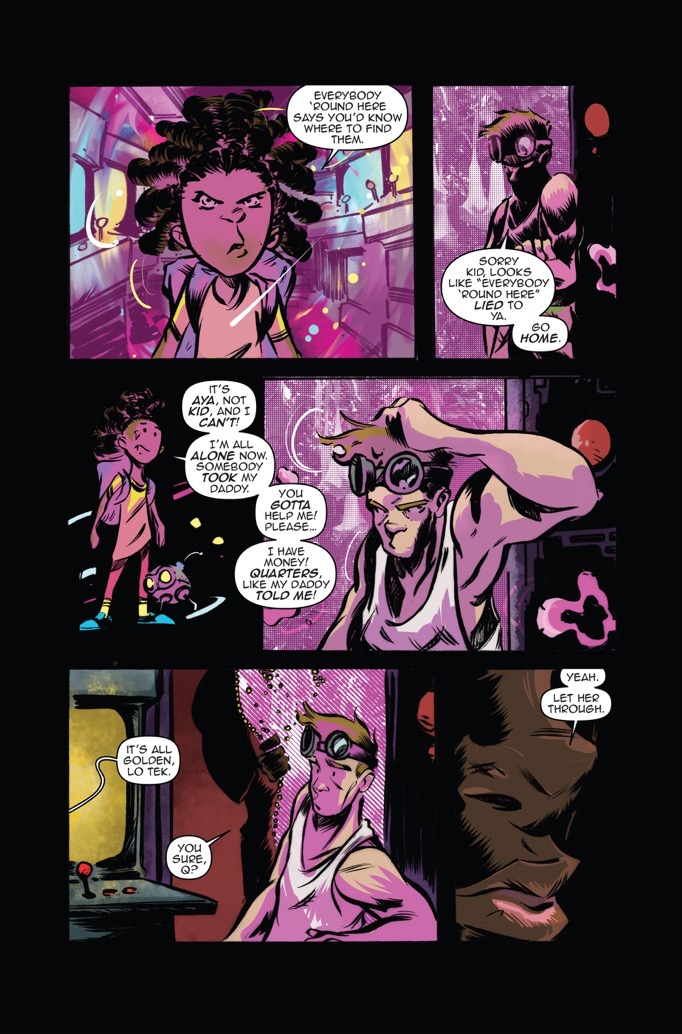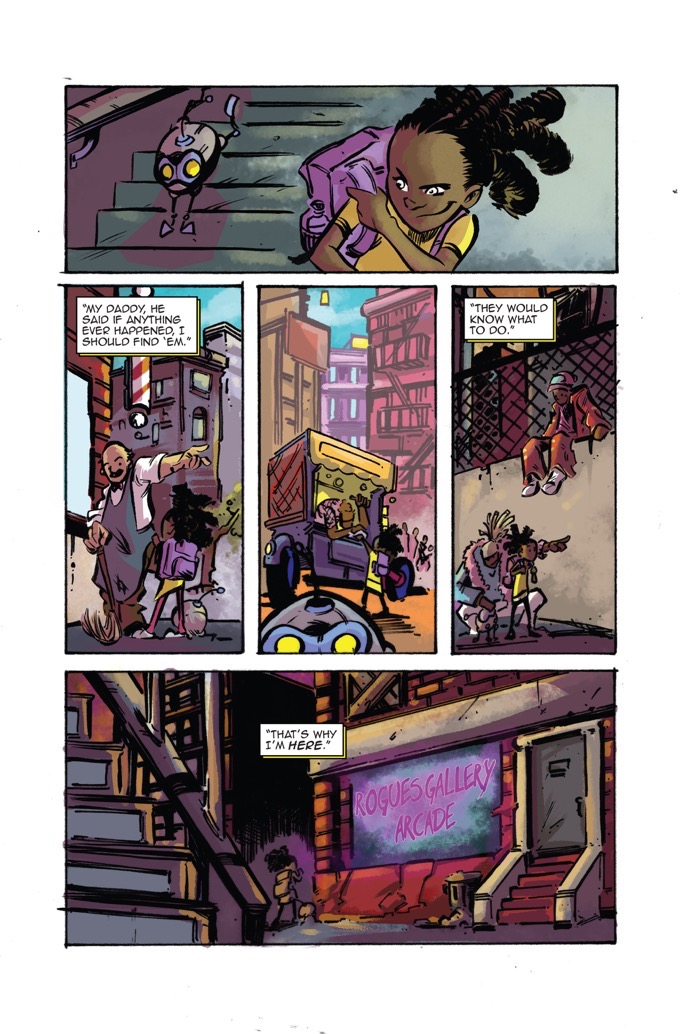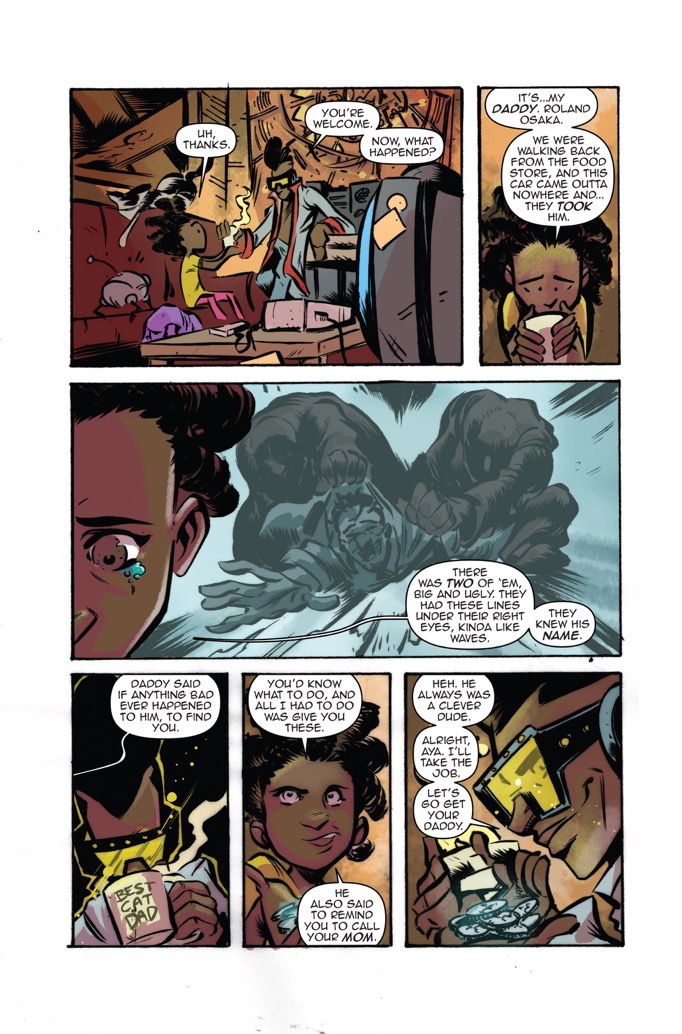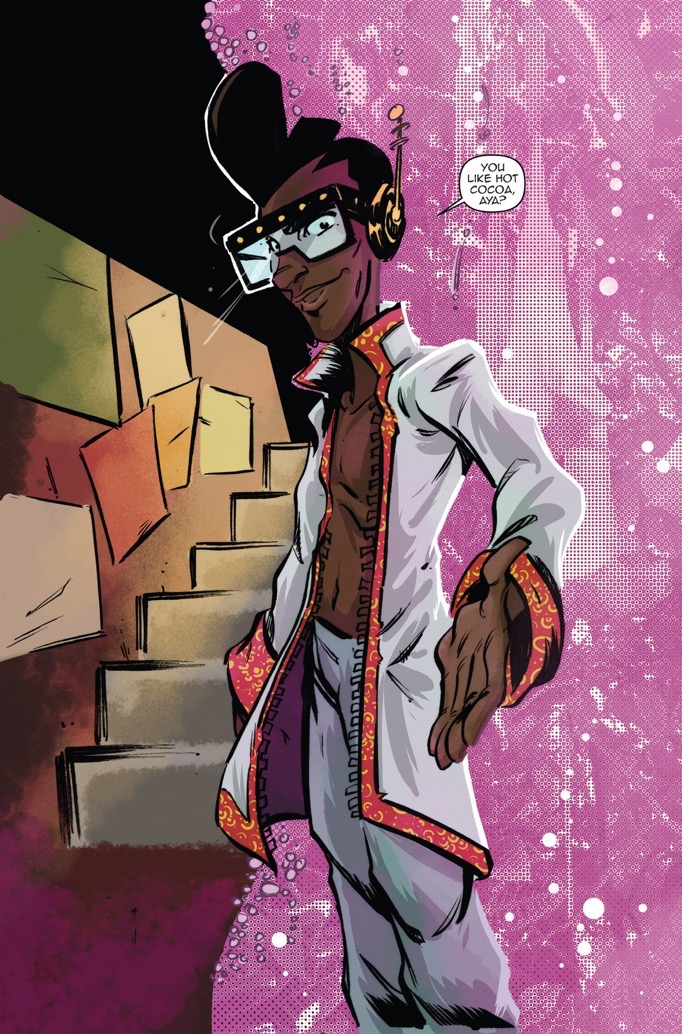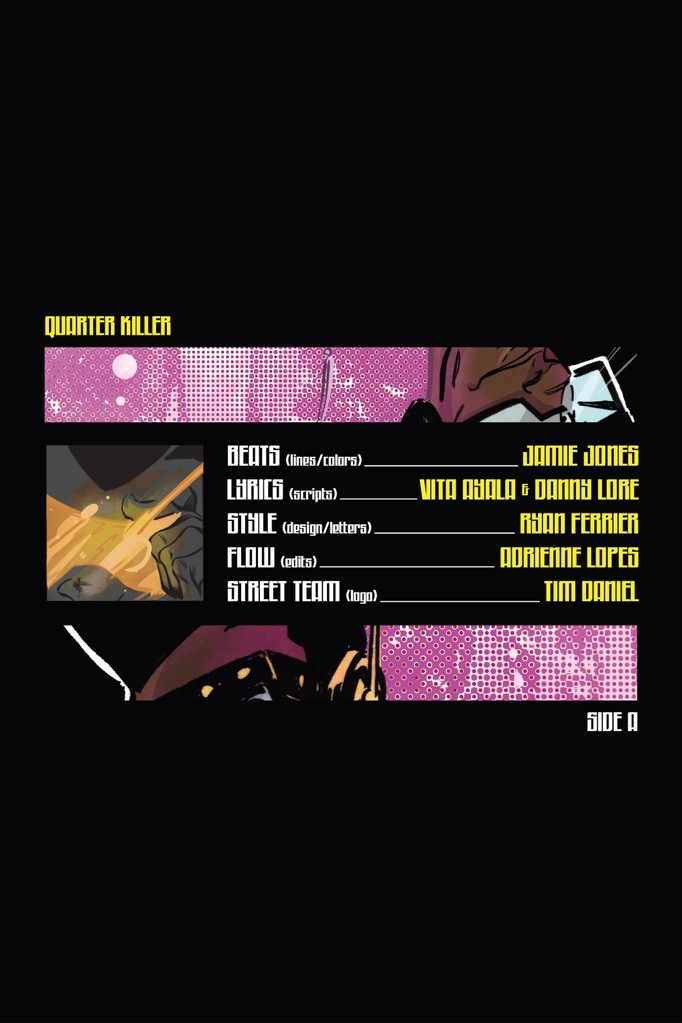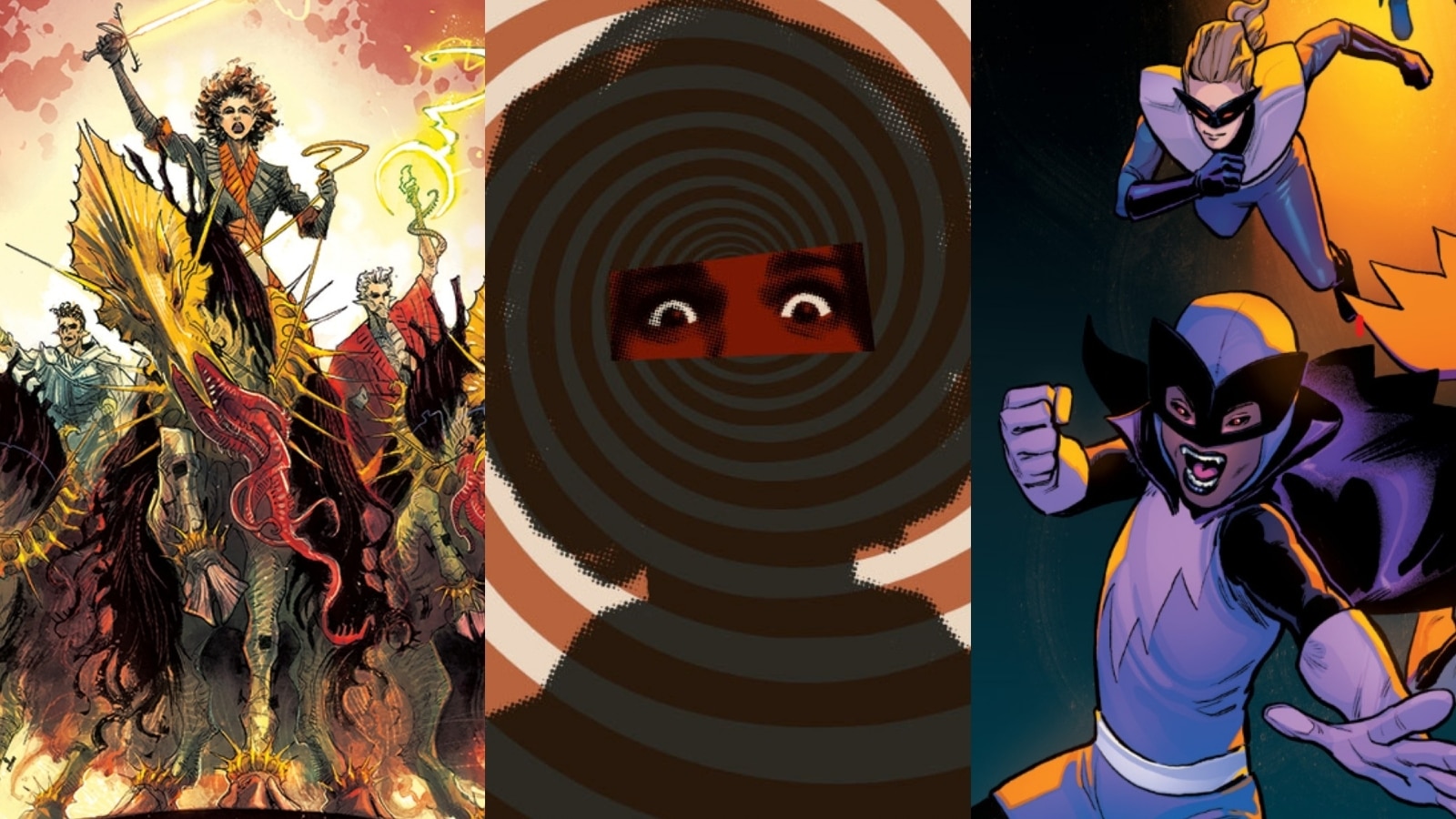Quarter Killer is the latest ComiXology Original from the digital publisher’s new wave of releases, and the book oozes cool. The titular character and their found family are characters you immediately want to know. They live in a cyberpunk dystopia, home to mysteries that start to come to light in the first issue. The Beat had the opportunity to conduct an email interview with all three creators of the series, Jamie Jones, Vita Ayala, and Danny Lore. Read what they have to say about their brand new series.
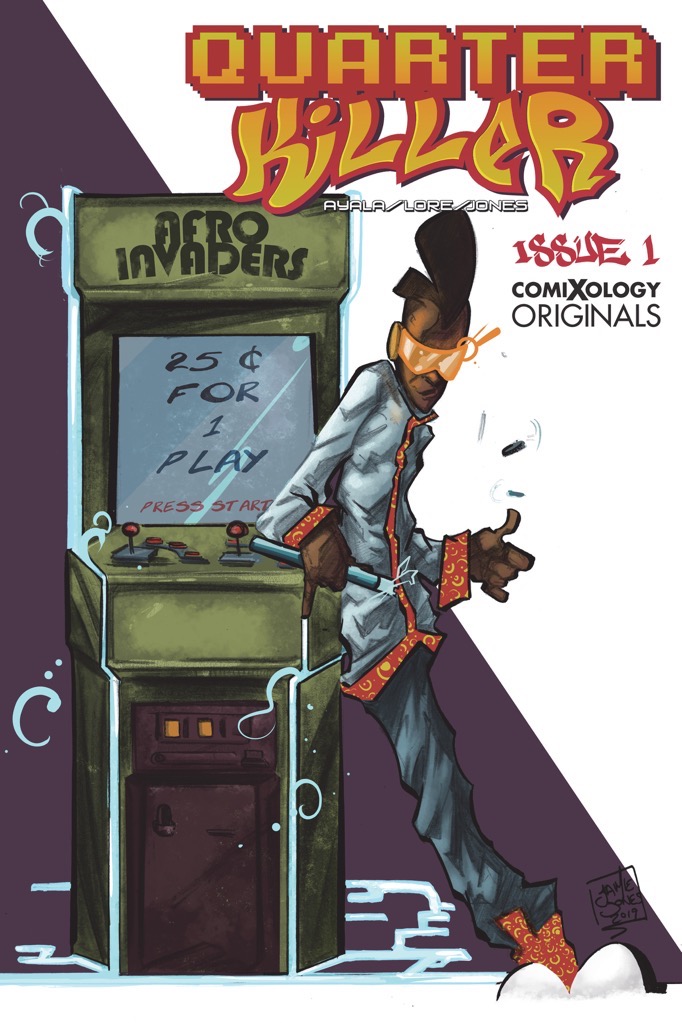
DANNY LORE: Vita and I met working at Forbidden Planet in New York. We were pretty much partners in crime, and came up with ideas for characters to entertain ourselves. I’m fairly certain that a lot of the initial concepts came during a couple of shifts, and evolved from there. And then Vita was like “I know the coolest artist ever,” and brought Jamie on a couple of years later.
VITA AYALA: This was our first detailed story idea, and a lot of what goes into the book are things that have been important to us as people. When we spitball things, we have a running list of ideas. We are both cyberpunk fans. We are both music fans. We both love video games. This is a mash up of who we are as people and what we love. And then bringing Jamie in added another level. He is as much a part of the fabric of this story as we are.
JAMIE JONES: A few years back I was at a convention and Vita was sitting next to me. We were both watching other creator’s tables. We hit it off. When I got home they hit me up about doing a book called Quarter Killer. I did some sketches and it’s been burning in the back of our minds since then.
What’s the co-writing process like?
LORE: Vita and I have been co-writing for nearly a decade in some way, even if it doesn’t always make it past the idea stage, lol. It changes depending on the issue and the story, but it’s very much shooting ideas back and forth (often while watching terrible movies), and then kind of ‘claiming’ parts of the story that we want to take point on. It’s really important to us that we each feel like we’re part of each issue, so we pass the issues back and forth a few times, tightening up dialog and scenes and things like that. There’s a lot of laughing involved, and a lot of making sure that Jamie gets to be dope– the combat scenes are very, very heavily him, even if we loosely map them.
AYALA: I have co-written any stories with many different folks. Danny and I have a particularly smooth process, as we are almost always on the same level in our thinking. We vibe, and that carried over to our writing.
How do you tailor the script towards Jamie Jones’ kinetic artstyle?
lore: Jamie is wildly good at so many parts of (the whole) process, and it’s really easy to write scripts for him– because he’s got this amazing ability to make what we do his own. He and Ryan are responsible for so much of the feel of the book, and it really is a complete circuit; we feed off of what everyone else brings to the table.
AYALA: Having been friends with Jamie for years, we went into working together with full communication. We know each other’s likes and dislikes, and we know to leave him room to do his thing. That is part of working with your co-creators though, and something I try and do across the board – try to play to someone’s strengths so they aren’t fighting the whole time.
An arcade features heavily into the story. Do arcade games have an influence on the story itself?
LORE: Most of the issues are directly inspired by vintage video games. While I can’t go too much into it without spoiling concepts, it’s a pretty regular occurrence that we just go “THIS GAME!” and we all are such nerds that we all are like “oh, i get it!” It’s pretty fun. Also the next issue is about video games.
AYALA: Yup. Video games are a major influence on my generation, as a whole, and to do a cyberpunk story without them would be sacrilegious!
JONES: Arcade games and retro games in general play a heavy roll in the world around the characters. There are lots of different references to older games. Featured in the art around characters. In the Cyberpunk future of QK video game culture is prevalent. And the retro game style has been assimilated into everything, from graffiti to casino signs.
Are any games in particular influential?
LORE: That’s spoilers ;)
AYALA: Too many to name!
JONES: Name an old game and there’s probably a reference. Issue one has Street Fighter 2, Gauntlet, Duck Hunt, and some I know I’m missing. I’m a huge Megaman fan so expect little things here and there from that series too.
By the end of the first issue the series still feels so open ended. What do you like about keeping readers guessing?
LORE: One of our influences here is Lone Wolf and Cub, and one of the things I love about that series is how even in its very standalone stories, it feels like this very large and real world. It was important for us to structure the first issue like that, and very much like the pilot of a series. You’ve got the “episode” which can stand on its own but then it leads very strongly into a season of adventure.
AYALA: It is open ended in so far as we indicate that there is more to come in the series, for sure. I think a good book leaves you satisfied with what you have read, but also excited to see more of the world. I hope that is the feeling people have when they finish issue one.
JONES: We are working in a sterilized medium. The goal for this team was to give the reader enough to have them feel satisfied with the reading experience but give them little bits to bring them back for more. The reader should never feel like they missed something, though. But, as storytellers there’s nothing better than adding little plot bombs to make the reader go, “Wait What?!”
Most of the relationships in the story are very transactional. What does that say about the world they live in?
LORE: While QK uses quarters as a starting point (like putting them in a pinball machine, it gets the ball rolling!), this is a story that centers around family, both blood and found family. As you go on, and even at the end of this issue, it becomes clearer and clearer that QK would have probably done this job for free (for reasons).
Also we had many conversations about this being a family. QK and Lo are married, in love, and still having adventures, and Hi and Aya and even Sim-One are very much a part of that. As the series continues, and there are other people that are in their orbit, you see that even people who want to have transactionary relationships with them just…don’t. They end up being with the group for bigger reasons than that.
The world that they exist in is transactional, and the way they survive it is by being anything but.
AYALA: The relationships are the opposite of transactional. The element of the quarters is a fun one, but it is about how QK relates to people who they DON’T have a relationship with. And at the end of the issue, they end up giving back most of the money (a small bit they keep to replace broken equipment). This is a story about community and family, and how we (as POC, as queer folks, as folks without a lot of resources) help each other survive and thrive.
The series has been described as cyberpunk, which is a fairly nebulous term. What does it mean to you for a story to fit the cyberpunk genre?
LORE: Cyberpunk was the first genre I fell in love with as a specific genre. It’s about marginalized people under the shadow of big towering corporations, and how they wrestle with that. It’s high tech on the streets and how people adapt to it, and how they perceive humanity because of it. There are so many stories that I love that wrestle with that– from the original Mirrorshades anthology to William Gibson’s work to Janelle Monae’s discography and more recently Malka Older’s Infomocracy (although I’m not sure if Older would place that as cyberpunk or even post-cyberpunk).
But also the cool thing about cyberpunk is that in some ways it is it’s own weird time circle now. It’s a genre that reacts to the 80s and what we thought the future was going to look like, and it’s a genre that looks a lot like now, and it’s a genre that still plays a part in how we imagine a technological and corporate-driven dystopian future. It’s retrofuture, present, and future all in one. And Quarter Killer exists in that space.
AYALA: Cyberpunk is a pretty specific sort of genre. It is tech-noir, with a concentration in resisting oppression, often from the POV of people of color (or having them featured heavily). QK fits smoothly and cleanly into that, I think.
The first issue of Quarter Killers is OUT NOW!


